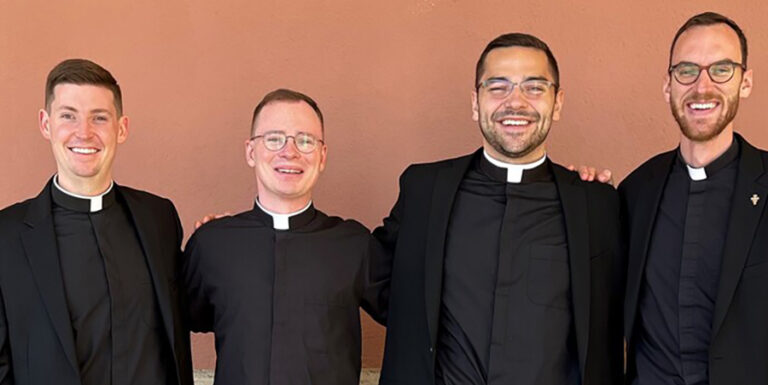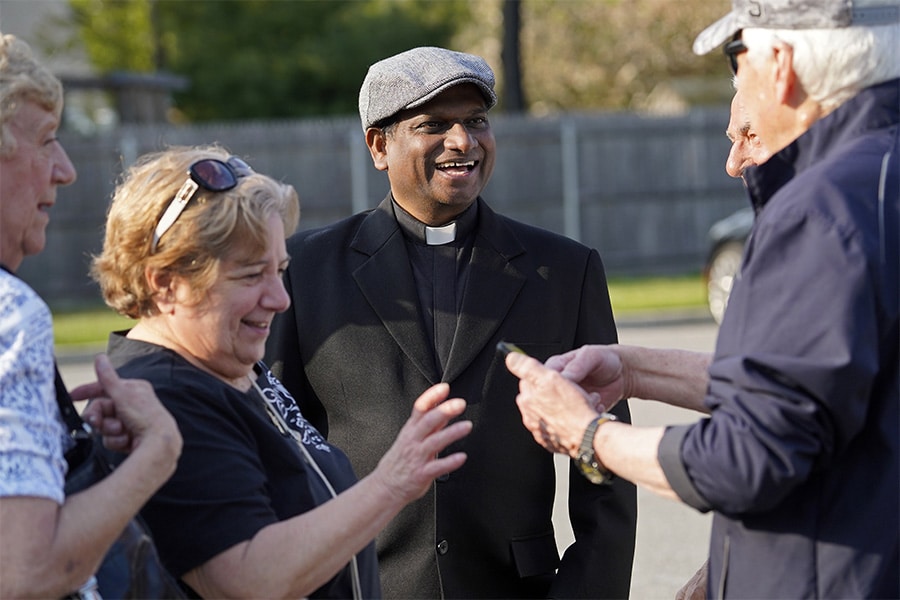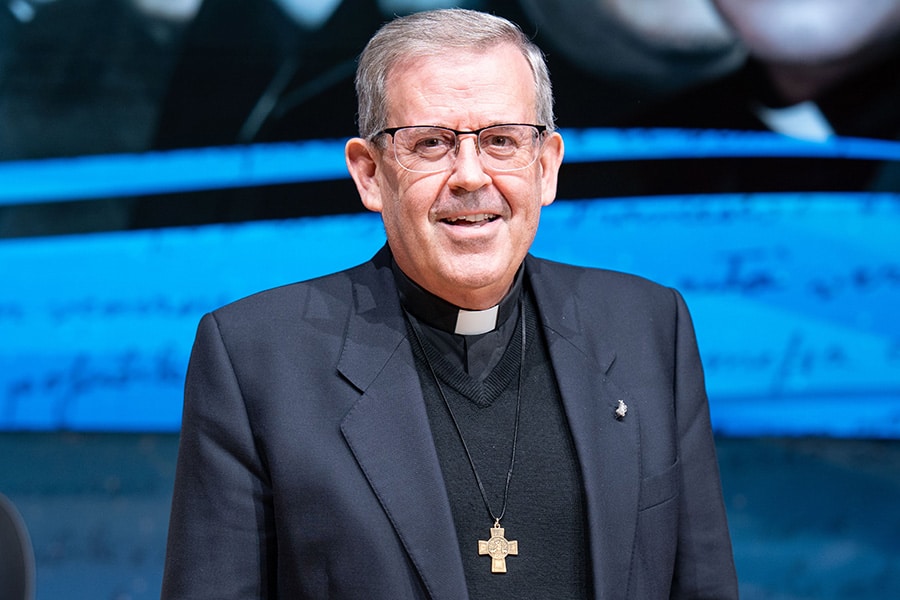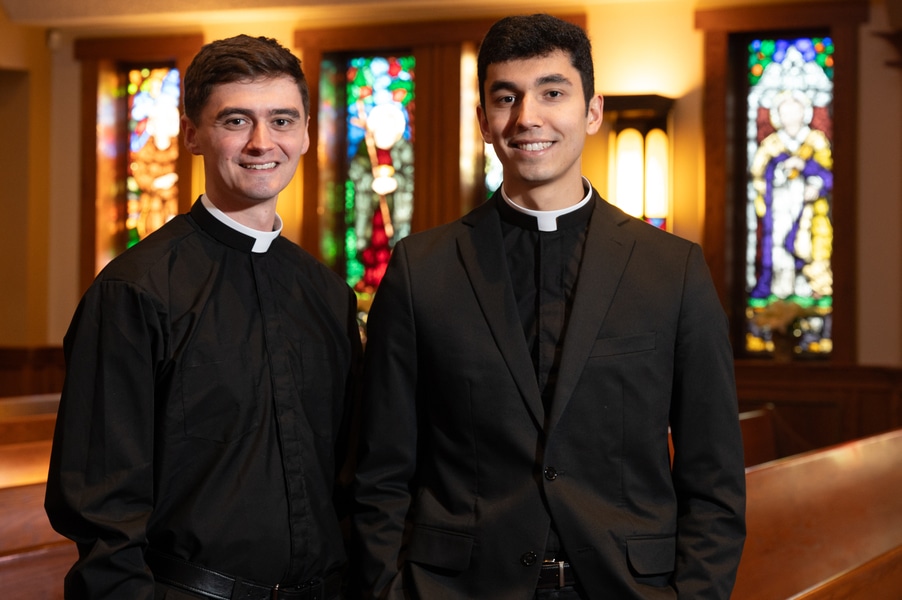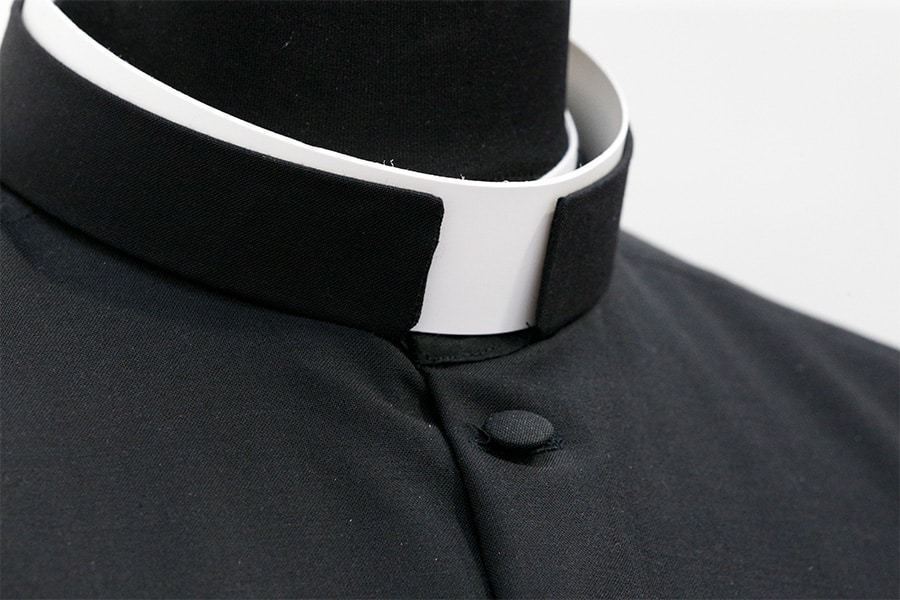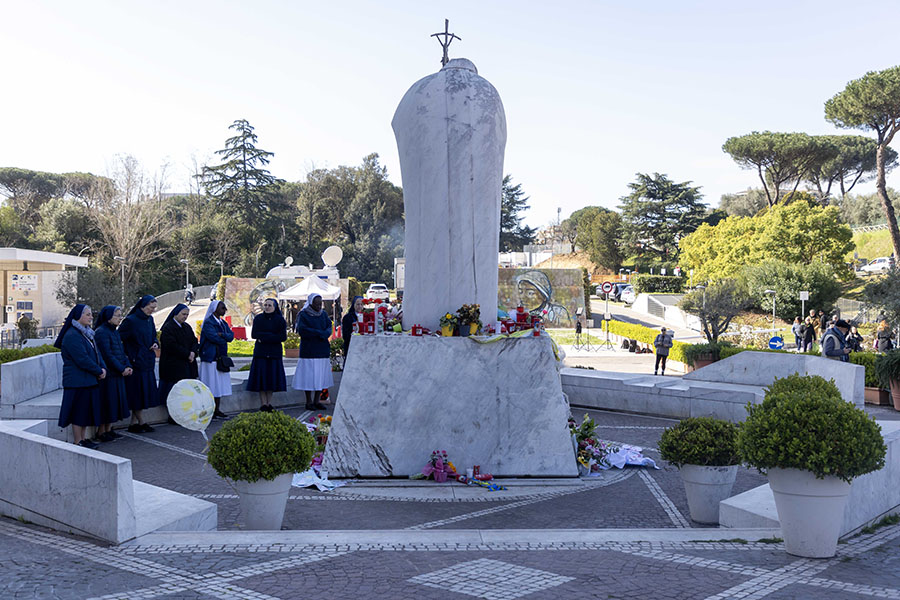VATICAN CITY – For seminarians attending the Pontifical North American College in Rome, the spiritual and secular collide whether they’re dodging Vespas and taxis en route to class or stopping off for a quick espresso and fellowship with their classmates.
All that while studying theology, learning to communicate in a different language and navigating the Eternal City and a different culture.
“In the mysteriously apt words of the modern (singer-songwriter) Luke Combs, Rome is ‘beautiful crazy,’ ” said Ben Oursler, one of four seminarians from the Archdiocese of Baltimore currently studying at what’s affectionately called “the NAC.” “Being here is living in beauty through the medium of the crazy.”
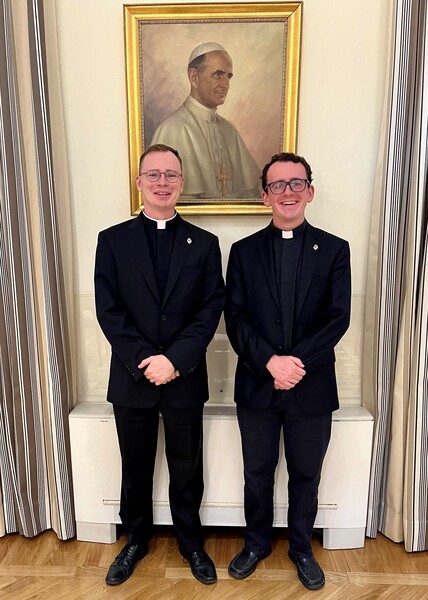
The Pontifical North American College is a place where future priests grow in their faith, experience the universality of the church and touch the past in a way not possible in most other seminaries.
Constructed in 1855 at the request of Blessed Pope Pius IX, the seminary is home to men from across the United States selected by their bishops to prepare for the priesthood at the internationally known house of formation.
First-year Baltimore seminarian John Anderson had his own take on the ever-old, ever-new quality of Rome being a key part of their education.
“There are the poor on the streets who love it when you stop for two minutes to have a conversation with them – St. Philip Neri did the same thing in his day,” Anderson said. “And there is the occasional opportunity to walk into a church and say hello to Jesus on the way to class and be receptive to the beauty that always lifts the soul to its creator.”
Like any other seminarians, those attending the NAC are working to develop four dimensions of the priesthood: the human, the spiritual, the intellectual and the pastoral. But there is a special fifth dimension that NAC seminarians are called to develop and share, according to Monsignor Thomas W. Powers, the seminary’s rector. And that’s a special understanding and experience of the church’s universality.
“We’re next to the tomb of St. Peter, walking the streets where saints lived,” Monsignor Powers said. “Just by being here you soak that up. We’re called to go back and share it with (our dioceses) as priests.”
Baltimore seminarian Thomas O’Donnell agreed.
“We’re to be a bridge between Baltimore and Rome,” O’Donnell said.
Oursler added that the seminarians chosen by their bishops to study at the NAC are “marinating” in the external gifts of Rome, but they aren’t just receiving those graces for themselves.
“The goal is to go back, but to see the universal church,” he said.
That universal quality is what sets the NAC apart from seminaries in the United States, which are generally regional in character, Monsignor Powers said. Seminarians attend classes with others from all over the world.
“I’ve made friendships with seminarians and religious from countries ranging from England and Ireland to Nigeria and Vietnam,” said Baltimore seminarian Andrew Chase.
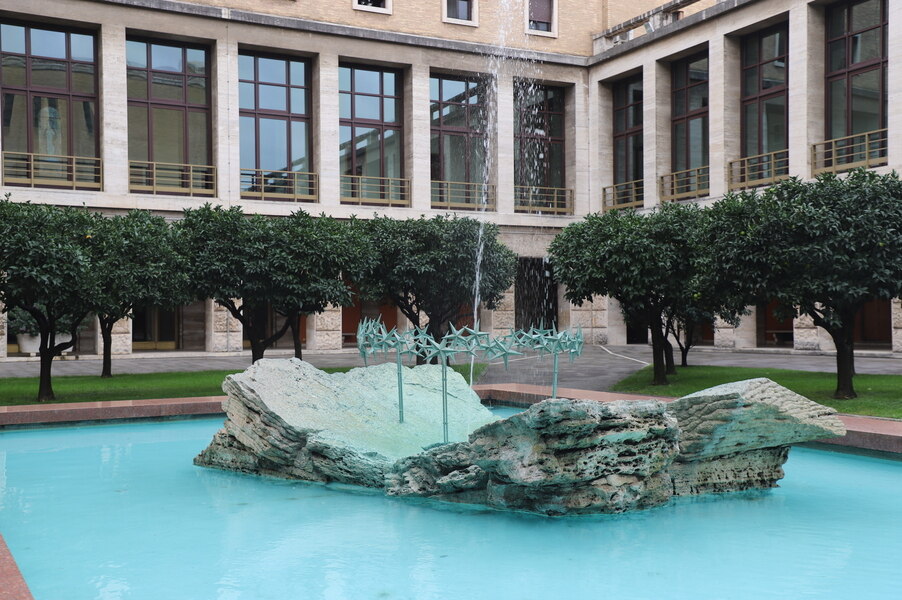
Anderson noted that studying with people from other countries “shows me a face of the church that I have not seen before. I’ve become very good friends with some of them, and I have been trying to learn tidbits of their tribal languages.”
Chase also has a regular apostolate at Centro Astali, where he rubs shoulders with volunteers from other parts of Europe while serving lunch to migrants.
“I have been blessed getting to know other volunteers from Norway, Germany and Malta, along with many of the people who come from all over the world,” he said.
There are 240 seminarians studying at the NAC. Once first-year students have a four-day crash course in getting to know Rome, they are sent to either Siena or Assisi to study Italian and return for yet another month to study Italian at the college. And then it’s generally off to either the Gregorian University or the University of St. Thomas Aquinas (Angelicum) to study theology. Seminarians from the Archdiocese of Baltimore typically study for five years at the NAC, including a year after their priestly ordination.
“We’re going through living in a new country, a new city. That can be uncomfortable,” Oursler said. But while being separated from family can make things difficult at times, studying in Rome “gives opportunities to create bonds of friendship with other seminarians and religious who, too, desire to leave behind what was familiar and comfortable and follow Christ.”
“Our seminary and our universities are also filled with great art, and the public cannot wander through as easily,” O’Donnell said. “So it’s a blessing to have beautiful places of rest and prayer which are more reserved for our personal growth.”
That is another quality that sets the NAC apart: it is a national seminary, not a regional one. Seminarians meet people from all over the United States (and one seminarian from Sydney, Australia), not just from nearby cities or states.
“It broadens the sense of what else is happening in the United States,” Monsignor Powers said.
Oursler pointed to seminarians from the Midwest in particular. “The Midwestern guys keep up the sense of Americana,” he said.
Father John Bilenki, who was ordained in June and is working at the NAC to finish up his licentiate in sacred theology, agreed.
“It’s a learning experience … getting to know their home life in their dioceses,” he said.
The NAC, whose past rectors include Baltimore Cardinal Edwin F. O’Brien, has a quiet courtyard filled with a small grove of orange trees that represent each of the 50 U.S. states. There’s also a fountain donated by Cardinal Richard Cushing, a former archbishop of Boston who died in 1970.
The NAC is a stone’s throw from St. Peter’s Basilica, and seminarians often benefit from their proximity to the Vatican. Some have opportunities to serve at papal Masses and other liturgies there.
“Occasionally the Holy See asks for some deacons to sing the Exsultet at the Easter Vigil,” Monsignor Powers said.
Finally, there is the nexus of the true, the good and the beautiful and the daily routine of classes and study.
“The streets remind us to watch where we’re going while on our earthly pilgrimage, while the church domes stand erect as silent witnesses to the beauty of our faith that remains ever ancient and ever new,” Oursler said.
About ‘The NAC’
- In 1854, Cardinal Nicholas Wiseman of Westminster, England, proposed the idea of a pontifical college in Rome for training American diocesan clergy, which won the approval of Pope Pius IX.
- Twelve American students arrived to attend the college Dec. 7, 1859.
- On Dec. 8, 1859, the Solemnity of the Immaculate Conception of the Blessed Virgin Mary, patroness of the United States, Pope Pius IX formally inaugurated the Pontifical North American College on the Via dell’Umilta, a property which the Holy Father himself had given to the bishops of America for the purpose of initiating the seminary.
- In 1953, the seminary department of the North American College was transferred to its new and current location on the Janiculum Hill overlooking Rome.
- Baltimore Cardinal Edwin F. O’Brien, before becoming a bishop, served as rector of the North American College from 1990 to 1994.
Read More Vocations
Copyright © 2023 Catholic Review Media

